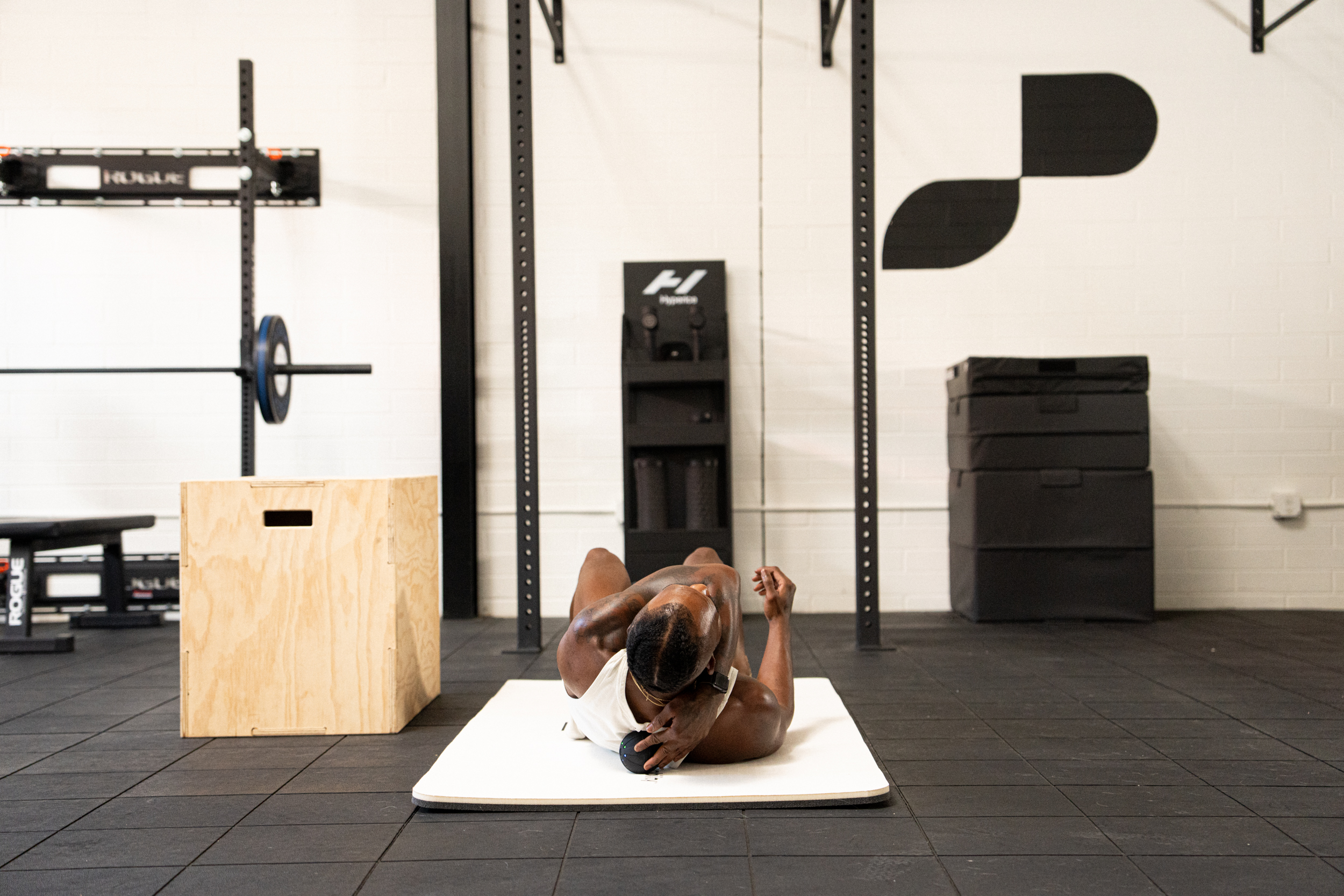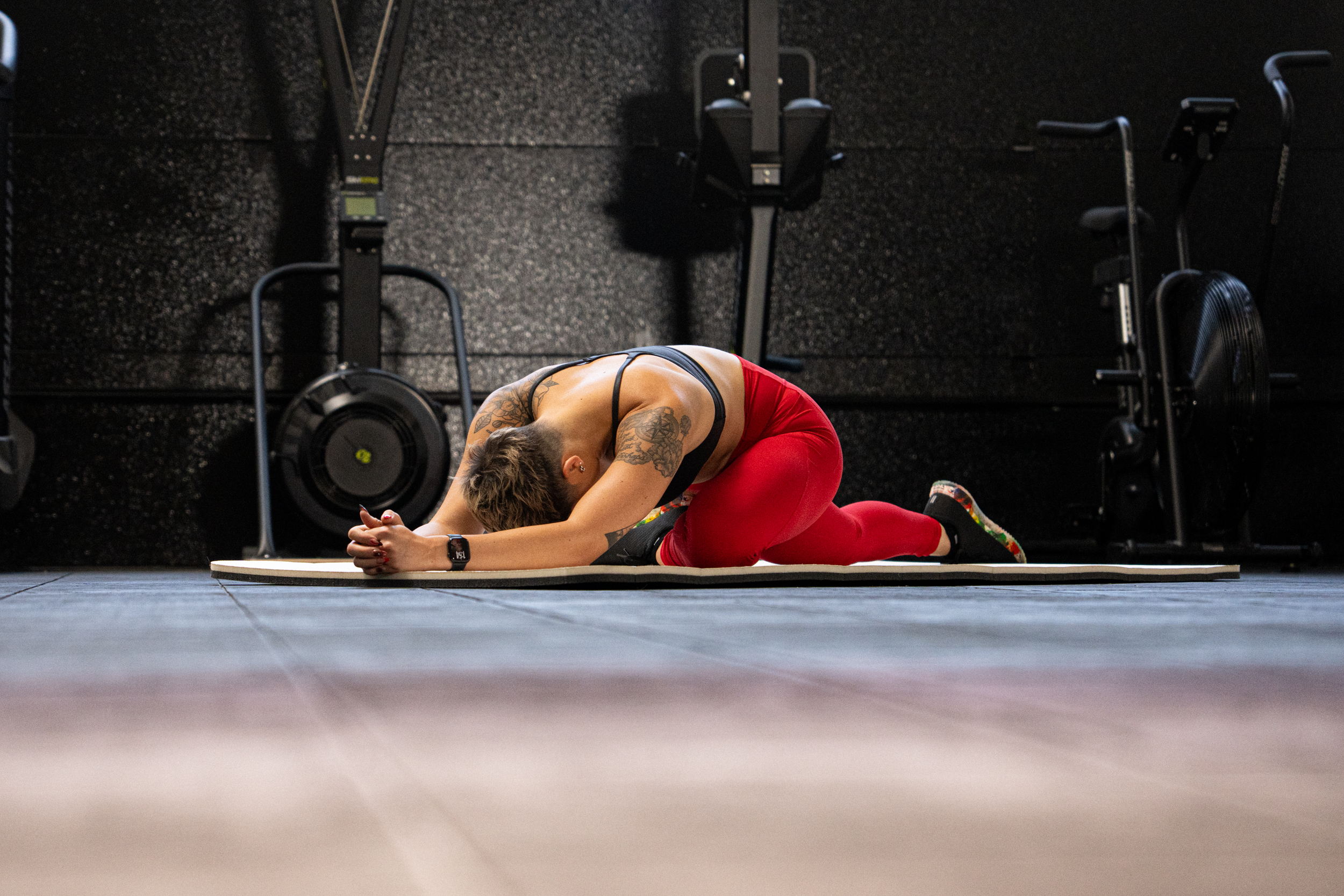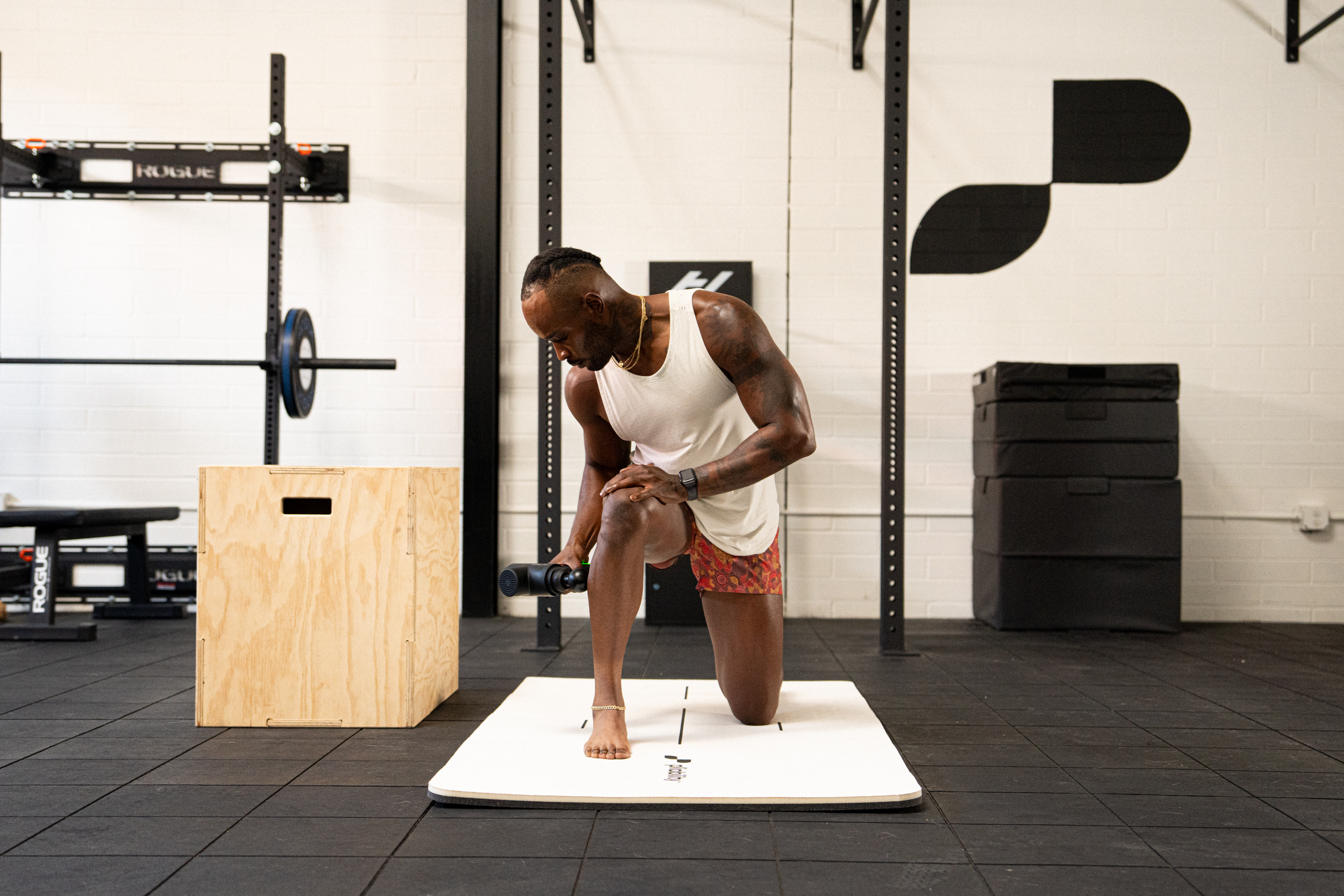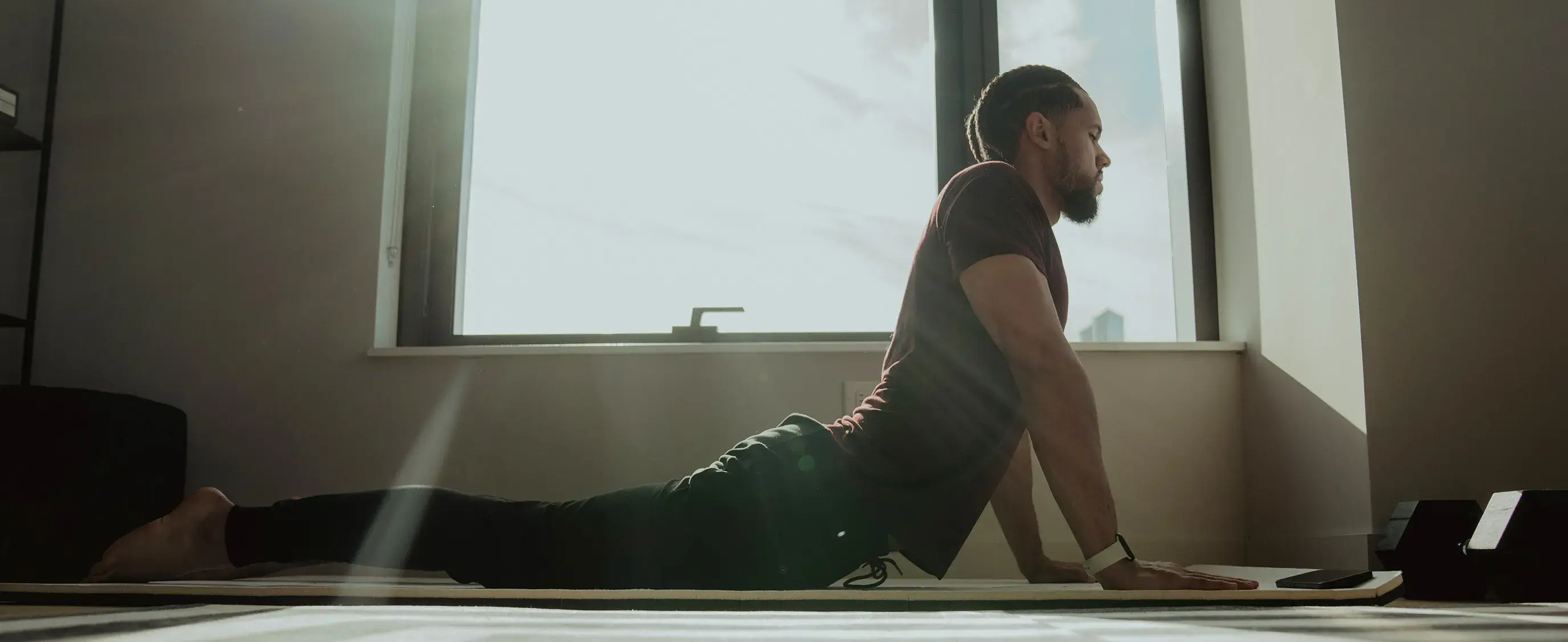After a long run, a day on your feet, or hours at your desk, tight lower legs can stop you in your tracks. Asking why are my calf muscles so tight—points you toward causes such as overuse, poor footwear, dehydration, muscle knots, nerve compression, Achilles tension, or the gastrocnemius and soleus muscles becoming tight. This piece breaks down those reasons and provides simple fixes, ranging from the Exercises for Stiff Neck and Shoulders and foam rolling to quick warm-up moves and recovery tips. Use these tools to find fast relief and stay flexible so you can move freely without discomfort holding you back.
Pliability’s mobility app builds short, guided routines and easy progressions to reduce calf tightness, prevent cramps, and restore range of motion, so you reach your goal without guesswork.
Why are My Calf Muscles so Tight?

If you have tight calves, you're familiar with the discomfort they can cause. Even walking may feel harder. When calf muscles limit flexibility, everyday tasks become more difficult, says Joey Loeb, PT, DPT, a physical therapist at Hinge Health. Address tight calves early, and they usually are not a significant problem.
What Your Calves Actually are and Why They Pull Your Heel
Your calf is composed of two main muscles:
- The gastrocnemius
- The soleus
These muscles push your foot down and pull your heel up during walking, running, and standing. When they tighten, they increase pressure on the ankle, knee, and foot joints, which can strain the connective tissue. Dr. Loeb explains that tight calves increase the risk of pain, stiffness, and injury, while simple steps can help loosen them and reduce discomfort.
How to Tell Your Calves are Too Tight: Signs to Watch
- Pain and stiffness in the back of the lower leg when you walk.
- Calves that feel hard or tense to the touch.
- Swelling in the calf area.
- Muscle cramps or spasms in the calves.
- Trouble flexing your toes or reduced ankle motion.
- Balance problems are linked to calf stiffness, as a 2019 study in the Journal of Korean Physical Therapy found.
- Ankle and foot pain from limited ankle mobility that stresses the Achilles and peroneal tendons.
Sitting Too Long and Other Forms of Inactivity
Prolonged sitting reduces blood flow and oxygen to the calf muscles, allowing them to stiffen. Motion increases circulation and muscle length, so when you remain still, the tissue can shorten and feel tight. This is common among office workers and individuals with a sedentary lifestyle.
Overuse from Exercise and Sudden Training Jumps
Increasing the distance or speed of running, biking, or hiking can overload the calves. Overuse causes microdamage and tightness, and prolonged training sessions without adequate recovery can lead to delayed onset muscle soreness, calf muscle strain, or persistent stiffness. Endurance athletes and new runners commonly report this pattern.
Shoes and Daily Habits That Shorten Calf Muscles
Worn-out shoes or poor arch support force the calf to work harder and become tight. Wearing high heels daily can shorten the calf muscles, so you may feel tight when you switch to flat shoes or go barefoot. Even casual footwear that lacks support changes ankle angles and increases calf strain.
Dehydration and Electrolyte Imbalance That Trigger Cramps
When fluid and electrolytes are in short supply, muscles lose their ability to contract and relax smoothly. Dehydration and low levels of sodium, potassium, calcium, or magnesium can cause calf cramps and a persistent tight feeling during activity or at night.
Other Injuries That Secondarily Tighten Your Calves
Injuries such as Achilles tendonitis, calf strains, or ankle sprains alter your gait and limit joint range of motion. The body compensates by overusing surrounding muscles, which often leads to increased calf tension and pain.
Medical and Structural Causes Worth Checking
Not all calf tightness is caused by daily habits. Consider these medical or structural factors when symptoms persist:
- Poor circulation and peripheral artery disease can cause leg pain, cramping with walking, and cold feet.
- Venous insufficiency or deep vein thrombosis may produce swelling, warmth, and constant calf pain. Seek urgent care if you have sudden swelling, redness, or shortness of breath.
- Nerve compression or sciatica may cause tightness, accompanied by numbness or radiating pain.
- Muscle imbalances, leg length differences, and joint stiffness in the ankle or knee can alter load and contribute to calf tightness.
- Chronic conditions, such as arthritis, diabetes-related neuropathy, or connective tissue disorders, can contribute to persistent stiffness.
How Tight Calves Affect Ankle Mobility and Balance
Reduced ankle dorsiflexion from tight calves shifts the load to other structures. That increases strain on the Achilles tendon and the peroneal tendons along the outer ankle and foot. As Dr. Loeb notes, limited ankle mobility raises the risk of injury and can worsen balance, making falls more likely for some people.
When Should You See a Clinician About Tight Calves
- Is the pain sudden or severe?
- Is swelling one-sided with warmth or redness?
- Do you have fever, breathing trouble, numbness, or sudden weakness?
If so, get medical attention. If tightness persists despite stretching, rest, hydration, and improved footwear, consult a physical therapist or doctor to rule out circulation, nerve, or tendon issues and to assess any underlying muscle imbalances.
Practical Cues to Spot the Cause
Which describes your routine:
- More sitting?
- A jump in training?
- New shoes?
- Less water intake?
Each pattern points to a likely cause of calf tightness and suggests different solutions, such as taking movement breaks, gradually increasing training intensity, adjusting footwear, or making adjustments to hydration and electrolyte levels.
Related Reading
- Why Do I Have Trouble Walking After Sitting
- Why Am I Sore After Stretching
- What Do Tight Muscles Look Like
- Why Do Muscles Get Tight
- Why is Hip Mobility Important
- How Can Stiff and Tight Muscles Result in Back Pain?
- Why is My Back So Stiff
- Why Are My Shoulders So Tight
- How to Prevent Morning Stiffness
How to Relieve Tight Calves

Try these easy actions first. Stretch gently, roll the calves with a foam roller, and gently rub the muscle with your hands or a ball. Drink water and add electrolytes if you sweat a lot. Apply heat or ice as needed, depending on the timing. Engage in light activity, such as walking, to help move fluid and reduce stiffness. Avoid bouncing during stretches. If pain is sharp, stop and rest the leg.
Standing Wall Stretch: How to Do the AAOS Recommended Stretch
Stand facing a wall and place both hands flat against it. Step one foot forward and bend that knee slightly. Keep the other leg straight and the foot flat on the floor. Press the heel of the straight leg into the floor and hold for about 30 seconds. Switch legs and repeat. Aim for 2 to 3 sets per side, and breathe calmly while holding the stretch.
Seated Towel Stretch: A Gentle Hamstring and Calf Lengthener
Sit on the floor with your back straight and your legs extended in front of you. Loop a towel or exercise band around the upper part of one foot and hold both ends. Gently pull the towel so your toes flex toward your body until you feel a stretch in the calf and behind the knee. Hold 30 seconds, rest 30 seconds, and do three repetitions per leg.
Calf Raises on a Step: Strength and Controlled Lengthening
Stand with the toes and front half of your feet on the edge of a sturdy step or stool so the heels hang off. Rise slowly onto the balls of your feet, then lower so the heels drop just below the step level. Repeat this 10 times. Add sets as strength improves, and try single-leg raises once you feel stable.
1. Gastrocnemius Focus
Stand near a wall with one foot forward and the front knee slightly bent. Keep the back knee straight and the back heel on the ground as you lean toward the wall. Feel the stretch up the back of the lower leg. Hold 20 to 30 seconds, switch legs, and do three repetitions total.
2. Soleus Focus
Stand near a wall with one foot forward and the front knee slightly bent. This time, bend the back knee while keeping its heel on the ground as you lean into the wall. You will feel the lower part of the calf stretch. Hold 20 to 30 seconds, switch legs, and alternate for three repetitions.
3. Step Stretch for Deeper Length
Stand on a step with the ball of your foot on the edge and the heel off the step. Hold onto a railing or wall for balance and slowly lower your heel while carrying weight through that leg. Hold the lowered position for 20 to 30 seconds, then switch legs and repeat 3 times on each side.
4. Active Mobility with a Flow
Start on all fours on a mat, then raise your hips so your body forms an inverted V, with your knees and elbows straight. Lift one foot off the ground and rest it on the opposite ankle briefly. Lower the heel of the lower foot toward the ground or as close as comfortable, then lift back onto the ball of the foot. Repeat 10 to 15 times per leg as part of your warm-up routine.
Foam Rolling and Self-Massage: How to Work Out Knots
Sit or stand and place a foam roller under the calf. Use your hands to lift the hips and roll slowly from just below the knee to the heel. Pause and hold on tight spots for 20-30 seconds. For a smaller tool, use a tennis ball or massage ball and press into tender points while moving the ankle back and forth. Maintain tolerable pressure; avoid deep pain.
Hydration and Electrolytes: How to Address Cramps
Drink water throughout the day and replenish electrolytes if you sweat heavily, have diarrhea, or use diuretics. Low potassium, magnesium, and sodium can contribute to muscle cramps and persistent tightness. Try a balanced sports drink or eat potassium-rich foods such as bananas and potatoes, and include magnesium sources like nuts and leafy greens.
Heat or Ice: When to Use Each
Use ice for new pain or swelling in the first 48 to 72 hours. Apply an ice pack for 20 minutes every two hours while resting and elevating the leg. Use heat when the area is chronically stiff or before stretching to warm the muscle. Apply moist heat for 15 to 20 minutes, then gently pull to improve the range of motion.
RICE for Immediate Muscle Trouble
Rest from the activity that caused the pain, apply ice to the area as described, use compression, such as a wrap, to limit swelling, and elevate the leg above heart level when possible. Continue RICE for the first 48 to 72 hours after you notice tightness and pain, and combine it with gentle range-of-motion exercises when pain allows.
Over-the-Counter Pain Relief: What Helps and What to Watch For
Nonprescription options include ibuprofen or naproxen to reduce pain and inflammation, and acetaminophen for pain relief if you cannot take NSAIDs. Follow dosing instructions on the label and check with your clinician if you have a bleeding risk, stomach issues, or kidney disease before using NSAIDs regularly.
Strength Work to Prevent Future Tightness: Build Endurance
Add progressive strength exercises to lower the risk of strain and muscle fatigue. Include double leg calf raises, single leg calf raises, and eccentric heel drops off a step for three sets of 10 to 15 reps. Strengthening the posterior chain, including the glutes and hamstrings, improves calf loading and reduces overload on the calf and Achilles tendons.
Massage Therapy: How It Helps and Where to Find Help
A licensed massage therapist can help reduce muscle tension and improve circulation through the use of hands-on massage techniques. Trained therapists use techniques from light effleurage to deeper work for trigger points. If you are in the United States, search the American Massage Therapy Association to find a provider and check coverage with your insurer before booking.
Physical Therapy: What a Therapist Offers
A physical therapist assesses gait, flexibility, strength, and movement patterns, and prescribes a customized program that may include manual therapy, targeted stretching, progressive strengthening, balance exercises, and home exercises. You may need a referral, depending on your insurance, and the therapist can advise on returning to sports or work tasks.
When to Seek Urgent Medical Care: Red Flags
Seek immediate care if you hear a pop in the calf with sudden inability to push off or bear weight, if the leg is hot, red, swollen, or tender along a vein, or if you have shortness of breath or chest pain. These signs can indicate a tendon rupture or a blood clot and need prompt evaluation.
When to See a Clinician or Physical Therapist: Persistent Problems
If calf tightness lasts more than four to six weeks despite self-care, if pain limits walking or sleep, or if you have numbness, tingling, worsening weakness, or visible deformity, schedule a medical evaluation. A clinician will rule out nerve problems, vascular issues, or structural tendon conditions and order imaging or tests if needed.
Precautions and How to Progress Safely
Always warm up before engaging in intense activity and gradually ease into new stretches and strength exercises. Avoid bouncing or forcing a stretch and stop if you feel sharp pain. If you have diabetes, peripheral neuropathy, or circulatory disease, consult your clinician before starting aggressive stretching or deep tissue work.
Questions to Help You Decide Next Steps
- Do you experience tightness after prolonged periods of sitting, long runs, or mostly at night?
- Do specific shoes or surface changes improve or worsen symptoms?
These details guide adjustments in activity, footwear, and the choice between home care and a therapist visit.
Related Reading
- Stiff Feet in the Morning
- How Can Poor Posture Result in Back Pain?
- How Long Stiff Neck Last
- Stiff Feet in the Morning
- Why Does My Knee Feel Stiff
- How to Treat Stiff Fingers in the Morning
- Joint Stiffness in the Morning
- What to Do for Tight Muscles
- How to Loosen Tight Lower Back Muscles While Standing
- How to Loosen Tight Muscles in Legs
Can I Prevent Tight Calves Before They Happen?

Before running, lifting, or quick sports, do a short warm-up focused on the calf muscles. Start with 10 slow calf raises, hold each rep for a count of two, then follow with 30 seconds of a standing calf stretch on each leg. Ease into a 5-minute walk or light jog to increase blood flow and muscle temperature. Dr. Loeb says this improves circulation and reduces the risk of muscle strain and calf cramps.
Replace Worn-Out Shoes on a Schedule: Protect Your Achilles and Calves
Worn shoes change your foot mechanics and increase stress on the gastrocnemius and soleus. The American Academy of Podiatric Sports Medicine recommends replacing running or walking shoes after 300 to 500 miles, or after 45 to 60 hours of high-impact sports, such as basketball, tennis, or aerobic dance. Check midsole compression and outsole wear; if your shoes look collapsed or feel less cushioned, your calves are probably working harder.
Use Moist Heat to Ease Post-Workout Soreness
When calves feel tight after a hard session, apply a hot water bottle or warm, wet towel for 10 to 20 minutes. Heat increases local blood flow and can help reduce soreness associated with delayed onset muscle soreness or minor overuse. Use this before gentle stretching to expand the range of motion in the tissue.
Cross Train to Reduce Overuse and Improve Recovery
Suppose you run or walk a lot, alternating with lower-impact options like swimming, cycling, or rowing. These activities maintain aerobic fitness while cutting repetitive load on the calf complex. Schedule easy cross-training days between hard sessions to allow the calf muscles time to recover and repair.
Foam Rolling: Quick, Evidence-Based Muscle Release
Use a foam roller on the calves for one to three minutes per side before workouts. A 2020 review in the Journal of Bodywork and Movement Therapies found foam rolling helps loosen stiff muscles, which can improve mobility and reduce perceived tightness. Roll slowly and pause for 20 to 30 seconds on tender spots.
Hydrate Smartly: Water Plus Electrolytes When You Need Them
Dehydration can cause muscle tension and cramps. For everyday activity, drink water regularly. For long or intense workouts, opt for an electrolyte-enhanced drink.
A 2021 study in the Journal of the International Society of Sports Nutrition found that consuming electrolytes during and after strenuous exercise resulted in fewer reports of muscle tightness and cramps. Sip during prolonged sessions and replace sodium and potassium if you sweat heavily.
Try Compression Sleeves to Support Blood Flow and Comfort
Compression sleeves provide mild, consistent pressure over the lower leg and may help circulation and reduce pain during activity. They are inexpensive and widely available at athletic stores and online. Use them for long workouts, travel, or when you expect prolonged standing to reduce swelling and tension.
Regular Physical Therapy or Massage for Endurance Athletes
Suppose long runs or repeated training exacerbate your calf pain. In that case, regular visits with a physical therapist or a licensed massage therapist can help correct movement faults, treat tight fascia, and maintain high performance. PT or sports massage also identifies tightness caused by trigger points, scar tissue, or imbalance that you might miss on your own.
Build Overall Strength and Mobility to Prevent Cramping
Muscle weakness and inactivity increase the likelihood of cramps and stiffness, particularly after the age of 40. Add two to three weekly strength sessions that include single-leg calf raises, eccentric heel drops, and exercises targeting your hamstrings and glutes to balance forces through your lower leg. Stronger calves tolerate load better and recover faster.
Calf Stretches and Strength Moves You Can Do Today
- Standing calf stretch: Hands on a wall, back knee straight, front knee bent; hold 30 seconds per side.
- Soleus stretch: Same position, but bend the back knee; hold 30 seconds per side.
- Eccentric heel drops: On a step, rise on both feet, then lower slowly on one foot for 3 to 5 seconds; 3 sets of 12 reps.
- Seated towel stretch: Loop a towel around your forefoot and pull gently for 30 seconds.
Perform these moves three to five times per week and add progressive load by increasing weight or reps.
PT Tip: Take Movement Breaks: Short Fixes for Tightness
“When you sit or stand in the same position for a long time, your calf muscles can tense up,” points out Dr. Loeb. Set a timer every 30 to 60 minutes and take a 60-second break:
- March in place
- Do 10 calf raises
- Step up and down a stair
These mini breaks prevent sustained muscle tension and keep circulation moving.
Small Habits, Big Gains: Consistency Beats Occasional Heroics
Which change will you make this week:
- A five-minute warm-up?
- Swapping shoes?
- Drinking an electrolyte beverage during your long workouts?
- Setting a movement timer?
Small, consistent habits, such as short daily stretches, timely shoe replacement, and regular hydration, reduce calf muscle stiffness over weeks and months, keeping you proactive rather than reactive.
Related Reading
- Can Tight Hips Cause Knee Pain
- How to Loosen Tight Forearm Muscles
- Why Do My Legs Feel Tight and Heavy
- Why Does My Forearm Feel Tight
- What Causes Stiff Neck
- How to Loosen Tight Jaw Muscles
- Why Do My Hands Feel Tight
- How to Loosen Tight Hips and Lower Back
- How to Loosen Tight Scalp Muscles
Improve Your Flexibility with Our Mobility App Today | Get 7 Days for Free on Any Platform

Pliability offers a programmatic approach for individuals seeking measurable improvements in flexibility and reduced pain. The app provides an extensive library of high-quality videos that combine targeted calf stretches, ankle mobilizations, self-release techniques, and progressive loading exercises specifically designed for athletes and active individuals.
Daily updated custom mobility programs adapt to your current state and goals, allowing you to do the right mix of mobility, recovery, and strength work each day. The body scanning feature pinpoints restriction patterns, allowing you to focus on areas such as tight calves, reduced ankle dorsiflexion, or compensations in the kinetic chain.
Pliability: 7-Day Free Trial for Faster Recovery & Better Mobility
Use Pliability alongside your training to speed recovery, improve range of motion, and reduce recurring stiffness. Sign up now for 7 days free on iPhone, iPad, Android, or on our website to test the programs and the body scan, and see how a targeted mobility plan changes movement.

.jpg)

.jpg)
.jpg)
.jpg)


